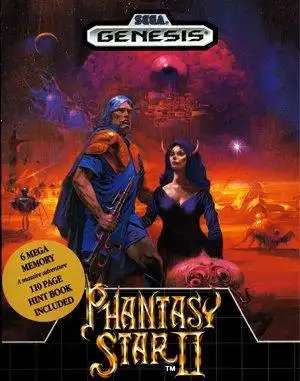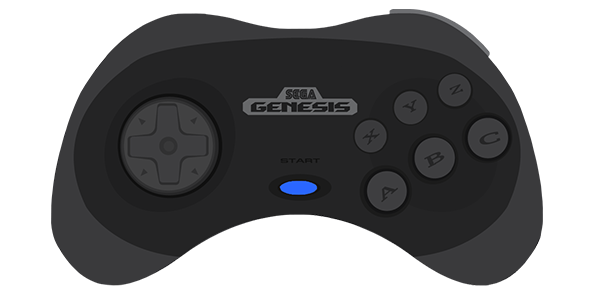The year is 1990 (or 1989 if you were lucky enough to be in Japan), and Sega decided to drop a bomb on the burgeoning 16-bit RPG scene. While Nintendo fans were eagerly anticipating Final Fantasy arriving stateside, Sega Genesis owners were grappling with something far more... alien. That something was Phantasy Star II, a game that wasn't just big for its time, but also brutally difficult and emotionally resonant in ways few console RPGs had dared to be.
Stepping away from the fantasy roots of the first game, Phantasy Star II plunged players into a futuristic, yet strangely pastoral, world. Gone were the caves and castles of Algo's past; now you were on Mota, a seemingly utopian planet managed by the benevolent supercomputer, Mother Brain. Life was easy, automated, and perfect... or so it seemed.
Stepping Onto Mota: A World of False Paradise
Imagine a world where everything is handled for you. Climate control is perfect, resources are managed automatically, and dangerous creatures are kept in check by the planet's advanced systems. That's Mota, a jewel in the Algol star system, a millennium after the events of the first Phantasy Star. You play as Rolf, a government agent living a comfortable life in Paseo. But recurring nightmares and strange system malfunctions hint that this paradise is built on shaky ground.
The vibrant, detailed sprites and environments were a huge leap from the 8-bit era, showcasing the Genesis's capabilities. Exploring Mota felt like stepping into a living, breathing (if slightly dangerous) ecosystem, a stark contrast to the more traditional fantasy worlds dominating the genre.
A Tale of Loss and Discovery: The Story That Hit Hard
Phantasy Star II didn't pull its punches. The story quickly unravels the facade of Mota's perfection. What starts as investigating system glitches escalates into a galaxy-spanning conspiracy involving biomonsters, political intrigue, and the very nature of the Algol system's history.
The game is perhaps most famous (or infamous) for its willingness to challenge player expectations and deliver genuinely shocking plot points. The introduction of Nei, a half-human, half-biomonster companion, adds a deeply personal layer to Rolf's journey. Her arc, in particular, is one of the most memorable and heartbreaking moments in 16-bit RPGs, leaving a lasting impact on players who experienced it. This wasn't just about saving the world; it was about understanding identity, prejudice, and sacrifice.
The Grind is Real: Gameplay and Brutal Difficulty
Let's be honest: Phantasy Star II is tough. Like, really tough. It earned a reputation for its high encounter rate, challenging turn-based battles, and dungeons that were less mazes and more sprawling, multi-level labyrinths designed to chew through your resources (and patience).
- Turn-Based Combat: Standard menu-driven battles, but enemies hit hard and often. Grinding wasn't just recommended; it was practically mandatory to survive.
- Overhead Exploration: Unlike the first game's first-person dungeons, PSII switched to a top-down perspective for exploration, making the world feel more cohesive, but the dungeons could still be incredibly disorienting without a map.
- Resource Management: TP (Technique Points) and healing items were precious. Finding towns or rest points was a constant relief.
- The Strategy Guide: Sega famously included a hefty strategy guide with the game in North America. This wasn't just a nice bonus; for many, it felt like a necessary survival tool to navigate the dungeons and understand the game's systems. It spoke volumes about the game's complexity and difficulty.
Despite the challenge, the satisfaction of overcoming a tough boss or finally navigating a particularly nasty dungeon was immense. It demanded your attention and strategic thinking, rewarding persistence.
Beyond the Cartridge: Legacy and How to Play Today
Phantasy Star II's legacy is undeniable. It pushed the boundaries of console RPGs with its complex science fiction narrative, mature themes, and willingness to take risks with its characters and plot. It proved the Genesis was a serious contender in the RPG space and helped solidify the Phantasy Star series as a unique voice in the genre.
Thankfully, experiencing this classic today doesn't require hunting down an original Genesis and cartridge (though that's always an option for purists!). Phantasy Star II has been ported and included in numerous collections over the years:
- Sega Genesis Classics: Available digitally on modern platforms like Steam, Nintendo Switch, PlayStation, and Xbox. This is often the most accessible way to play.
- Sega Genesis Mini Consoles: Included on various versions, sometimes with quality-of-life enhancements like save states and rewind features that can make the infamous difficulty a little more manageable.
- Older Collections: Found on Sega Saturn, Dreamcast, PS2 (as a remake in Japan, Phantasy Star Generation 2), PSP, and more.
Playing Phantasy Star II today is a trip back in time to an era when RPGs were often unforgiving but incredibly rewarding. It's a chance to experience a landmark title that influenced many games that followed and to see why Rolf, Nei, and the tragic world of Mota remain etched in the memories of retro gamers.
Frequently Asked Questions
Q: Is Phantasy Star II really that hard? A: Yes, it has a well-deserved reputation for being very challenging due to high encounter rates, tough enemies, and complex dungeons. Be prepared to grind!
Q: Do I need to play the first Phantasy Star before Phantasy Star II? A: While Phantasy Star II takes place 1,000 years later, it's set in the same star system and has connections to the first game's plot and characters. Playing the first game enhances the experience and provides valuable context, but PSII can be enjoyed on its own.
Q: Is Nei a playable character throughout the game? A: Nei is a core party member for a significant portion of the game, and her story is central to the plot.
Q: What makes Phantasy Star II unique? A: Its bold science fiction setting, mature and often tragic storyline, challenging difficulty, and detailed worldbuilding set it apart from many fantasy-focused RPGs of its time.


